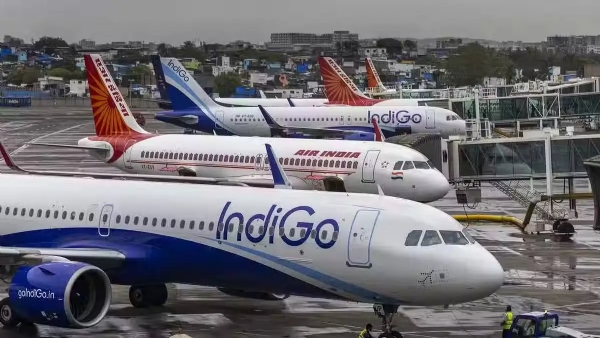India ministers sell bullish view at Davos as China's growth falters
Indian Prime Minister Narendra Modi's cabinet ministers came to the World Economic Forum's annual meeting in Davos with a clear and direct message. If now was time for India to assert itself as a powerful economy, then "India has seized the moment."
This message was hammered home to audience members at a session on Thursday titled "Can India seize its moment?" Hardeep Singh Puri, minister of petroleum, natural gas, housing and urban affairs, kicked off the panel session, saying it already had.
In the latest survey released by BofA Securities on Tuesday, major fund managers were net 18% overweight on India, second only to Japan's 59% among major Asia-Pacific markets. This is in sharp contrast to China, where it remains 20% underweight. The survey was conducted this month, covering 256 funds with aggregate assets under management of $669 billion.
Ashwini Vaishnaw, minister of railways, communications, electronics and information technology, cited four pillars that have been instrumental in transforming the Indian economy over the last decade under Modi: building physical and digital infrastructure, achieving inclusive growth, enhancing the manufacturing sector, and cutting red tape.
For instance, 510 million bank accounts were opened over the past 10 years, meaning a substantial portion of lower income people were "brought into the formal financial system," Vaishnaw said.
On deregulation, more than 1,500 laws and statutes were repealed, including the abolishment of many colonial period laws and procedures. The telecom sector benefitted greatly, with the time it takes to obtain a permit to set up mobile base station slashed from an average of 230 days to just seven days.
Formal job creation in 2019 totaled about 600,000 a month, but has increased to 1.5 million a month recently, Vaishnaw said,
Are Myanmar militants behind attack on police commandos in Manipur?
Two police commandos were killed in an attack by armed assailants in Moreh, a town on the border with Myanmar. Manipur Security Adviser Kuldiep Singh has alleged some militants from Myanmar may have been involved.
Let it snow: Why winters are becoming shorter and drier in Kashmir
Kashmir and Ladakh are witnessing one of their driest winters with hardly any snow. The winter duration in the region has shortened and this change is attributed to climate change.
"Navigating the Skies: India's Aviation Odyssey Beyond Flight Delays"
India's aviation narrative extends beyond the recent challenges of flight delays caused by inclement weather. While the recent disruptions served as a reality check, the true tale lies in the strides the country has made in transforming its aviation landscape.
Over the past decade, India has witnessed a remarkable aviation boom, marked by a significant increase in the number of airports – from 74 to 148 – with plans to reach 220 by 2030. The surge in air traffic, reaching an all-time high of 153 million domestic passengers in 2023, exemplifies the nation's growing connectivity. Despite the recent setbacks, estimates predict a further upswing in 2024.
Two key factors underpin this aviation growth. First is the expansion of access, with more cities having airports, facilitating increased air travel. Second is the consistent growth of India's middle class, projected to constitute 38 percent of the population by 2031 and 60 percent by 2047, making air travel more accessible.

The optimism in India's aviation potential is evident in the massive plane orders placed by Indian carriers. With orders totaling nearly 1,000 planes, including Air India's 470 and Indigo's 500, the industry anticipates substantial growth.
Prime Minister Narendra Modi's vision, articulated in 2017, emphasizes making air travel accessible to all, not just the affluent. Presently, only 3 percent of India's population flies regularly, compared to 145 million in the United States. Bridging this gap requires addressing challenges such as the need for more affordable flights through increased competition.
The current aviation landscape is dominated by a duopoly, with Indigo commanding 60 percent of the market share and Tata's carriers holding 26 percent. This concentration limits competition and keeps prices high. To foster a more competitive environment and lower prices, India needs to encourage more players to enter the market.
However, the journey toward a more accessible and profitable aviation sector involves overcoming significant challenges. The sector is currently grappling with substantial losses – 17,000 crore rupees in the last financial year and an estimated 4,000 crores this year. Achieving profitability is crucial to attract new players and sustain growth.
The path forward requires collaboration between the government and the private sector, emphasizing the importance of maintaining high standards in airport infrastructure, technology, and innovation. India's aviation sector, poised for takeoff, holds immense potential but requires a concerted effort to ensure accessibility and profitability become enduring features of its aviation landscape

No comments:
Post a Comment